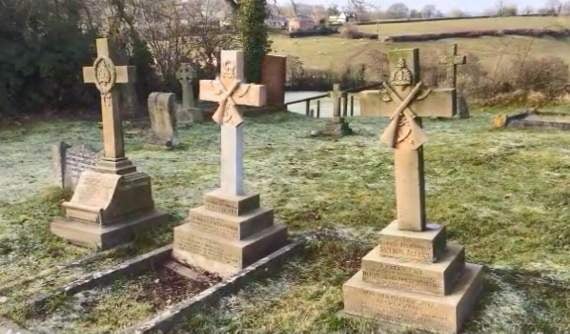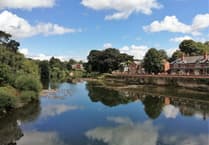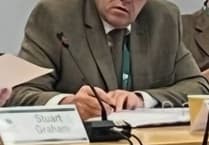Thanks to a campaign organised by residents of Hoarwithy, the headstone of a former villager, who died 100 years ago has been restored. Private George Henry Edwards was one of 18 men from the parish of Hentland and Hoarwithy who died during World War 1, and whose names are commemorated on a plaque inside St Catherine’s Church. Only five of the men are buried in the churchyard, the others are either buried, or their names commemorated, overseas.
Sadly the memorial headstone of this local hero was damaged and it has been slowly deteriorating since. Jim and Leslie Buckley decided to appeal for help to restore it as the centenary of Pte Edwards’ death in Palestine approached.
Cat Whiteway, (pictured) who specialises in tracing people, including Hillary Clinton’s ancestors, and frequently appears on TV and radio, was approached to help tell Private Edward’s story. Cat set to work tracing relatives and his army service history.
Private George Henry Edwards was born on January 25th 1893 in Hentland and baptised in St Catherine’s. He had seven siblings; Richard, George, William, Charles, Albert, Annie, Percy and Gertrude. His little sister Gertrude died in 1915 aged just six months and is buried in the same grave as her brother. Their parents, Thomas and Annie each lived to the age of 82 and are also buried in the churchyard.
George was not the only son to sign up and serve for his country. His brothers Richard and Charles both also joined the army, Charles returning from Australia where he had recently emigrated. Sadly none of their service records survived the bombing of the War Office during the Blitz but from his original service number, 2970, it is possible to determine that George enlisted early, before conscription, during November 1914.
Private Edwards was first wounded on September 14th, 1915 whilst the 1st Battalion The Herefordshire Regiment were fighting in Gallipoli. Then on December 24th 1917 Private Edwards’ name appears again in a casualty list printed in the Times. He had received a gun shot wound to his chest several weeks prior to that date on November 6th during the battle of Khuwelilfeh. He was transferred to the Southern General Hospital in Bristol, where he died on February 4th, 1918.
Several members of George’s family have been traced, including Charles’ four surviving children in New South Wales and they were able to listen to the service on February 4th when his headstone was rededicated with military honours.
Cat told the Ross Gazette that they are hoping to inspire other people to do the same for their war graves, especially in this important centenary year for WW1.





Comments
This article has no comments yet. Be the first to leave a comment.